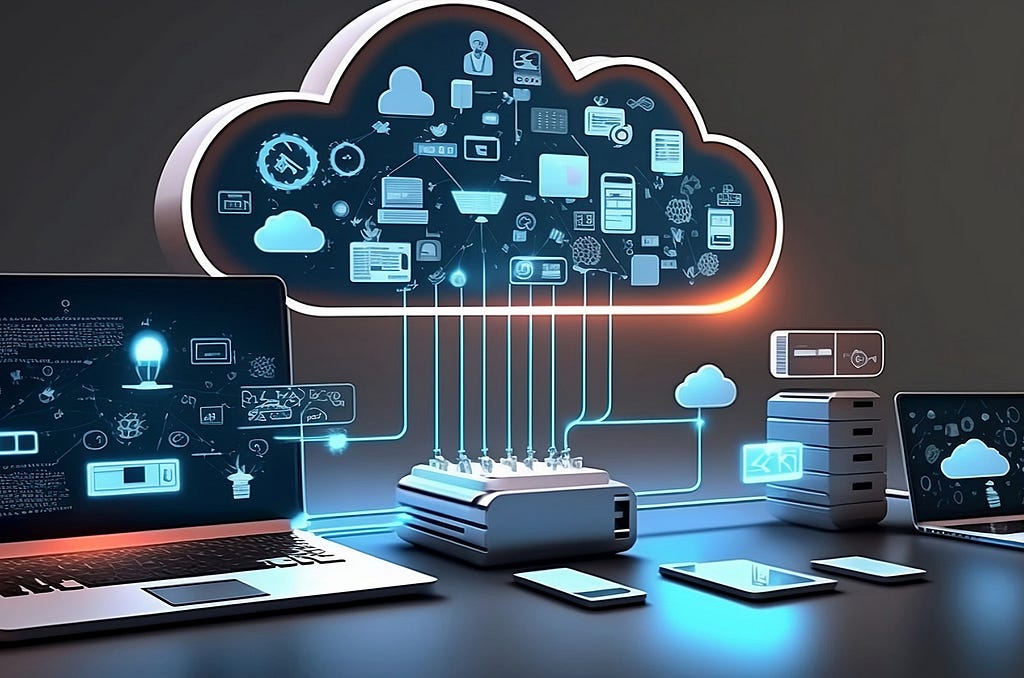Back to Basics — Networking: All About Cloud Computing
The basic idea behind cloud computing is to outsource one or more of your networked computing resources to the internet.

Benefits of moving to cloud —
Cost Effective
Cloud based computing typically is less expensive than traditional computing.
Scalable
What if we need more space and we must purchase the additional disk drives to accommodate extra space. But when the load decreases, the disk drivers not used cannot be returned. with cloud computing you pay only for the capacity you are actually using.
Reliable
cloud services are usually provided by large companies such as Amazon. Google, Microsoft, IBM. These companies has state-of-the-art data centers with multiple redundancies for their cloud services. It is kept on multiple servers so that if one server fails, the other can take over the load.
Hassle-Free
With cloud based services you basically outsource the job of complex system maintenance chores such as software upgrade, patches, hardware maintenance, backup and so on.
Globally Accessible
Cloud services are available anywhere you have an internet connection.
Drawbacks of Cloud Computing —
Entrenched Applications
There might be some applications that don’t run on the cloud computing or at least require significant conversion efforts to migrate to the cloud.
Internet Connection Speed
Users used to access their data on local file servers over gigabit speed connections. Now they must access data over slower bandwidth internet connections
Internet connection Reliability
The cloud resources you access may feature all the redundancy in the world, but if your users access the cloud through a single internet connection, that connection becomes a key point of vulnerability. Should it fail, any applications that depend on the cloud will be unavailable.
Two ways to mitigate this risk — Make sure that you are using an enterprise-class internet connection and provide redundant connections if you can
Security Threats
As the applications and data are on the cloud providers, we should make sure that the strong password policies are enforced
Different kinds of Cloud Services
Applications —
It is referred as Software as a service, fully functional applications can be delivered via the cloud. when you use cloud-based application, you dont have to worry about any of the details that are commonly associated with running an application on your network such as deploying the application and applying product upgrades and software patches.
Also we do not worry about the hardware or OS platform on which the application run.
Platforms —
It is referred as Platform as a Service, this class of service refers to providers that give you access to a remote virtual operating platform on which you can build your own applications.
If you use a web provider to host your company’s website you are already using a PaaS.
when you use PaaS, you take on the responsibility of developing you own custom applications to run on the remote platform. The PaaS provider takes care of the details of maintaining the platform itself, including the base operating system and the hardware on which the platform runs.
Infrastructure —
If you do not want to delegate the responsibility of maintaining the Operating system and other elements of the platform, you can use Infrastructure as a Service (IaaS). when you use IaaS, you are purchasing raw computing power that is accessible via the cloud. IaaS provides you access to a remote virtual machine. It is up to you to manage and configure the remote machine however we want
Private Clouds Vs Public Clouds
The most common form of cloud computing uses what is known as a public cloud, that is the cloud services that are available to anyone in the world via internet.
A public cloud is like a public utility, in that anyone can subscribe to it on a pay-as-you-go basis. One of the drawbacks of public cloud services is that they are inherently insecure., When you use a public cloud service you are entrusting your valuable data ot a third party that you cannot control.
Besides security, another drawback of public cloud computing is that i is dependent on high speed and reliable internet connections.
A private cloud mimics many of the features of cloud computing but is implemented on private hardware within a local network so it is not accessible to the general public. Private cloud are inherently more secure because the general public cannot access them.
As a rule, private clouds are implemented by large organizations that have the resources available to create and maintain their own cloud servers
There is also hybrid cloud, which combines the features of public and private clouds. Hybrid cloud uses a small private cloud that provides local access to some of the applications and the public cloud for others. You might maintain your most frequently used data on a private cloud for fast access via the local network and use the public cloud to store archives and other less frequently used data, for which performance is not much of an issue.
Some Major Cloud Providers
There are hundreds or thousands of companies that provide cloud services. Most of the cloud services in the market are provided by some major players —
Amazon
Largest provider of cloud services in the world is Amazon. They include the features like
- Amazon CloudFront — A PaaS content delivery system
- Amazon Elastic Compute Cloud — An IaaS system that provides access to raw computing power
- Amazon Simple Storage Service — Provides web based data storage for unlimited amounts of data
- Amazon Simple Queue Service — Provides the data trasfer system that les your application send messages to other applications
- Amazon Virtual Private cloud — Uses virtual Private Network Connections to connect your local network to Amazon’s cloud services
there are other services that amazon provides too.
Google is also one of the largest providers of cloud services.
- G-Suite — A replacement for Microsoft office that provides basic email, word processing, spreadsheet and database functions via the cloud.
- Google Drive — A cloud based solution that lets you work with google cloud data directly from within Microsoft office applications
- Google App Engine — A PaaS interface that lets you develop your own applications that work with Google’s cloud services
- Google Cloud Print — Allows you to connect your printers to the cloud so that they can be accessed from anywhere
- Google Maps — A Global information system(GIS)
Microsoft
Microsoft has its own cloud strategy, designed in part to protect its core business of operating systems and office applications against competition from other cloud providers
- Microsoft Office 365 — A cloud based version of Microsoft office
- Windows Azure — A PaaS offering that lets you build websites, deploy virtual machines that run Windows server or Linux or access cloud versions of server application such as SQL server
Getting into Cloud
- Don’t depend on poor internet connection
- Assess what applications you may already have running on the cloud
- Don’t move to the cloud all at once
- Go with reputable company
